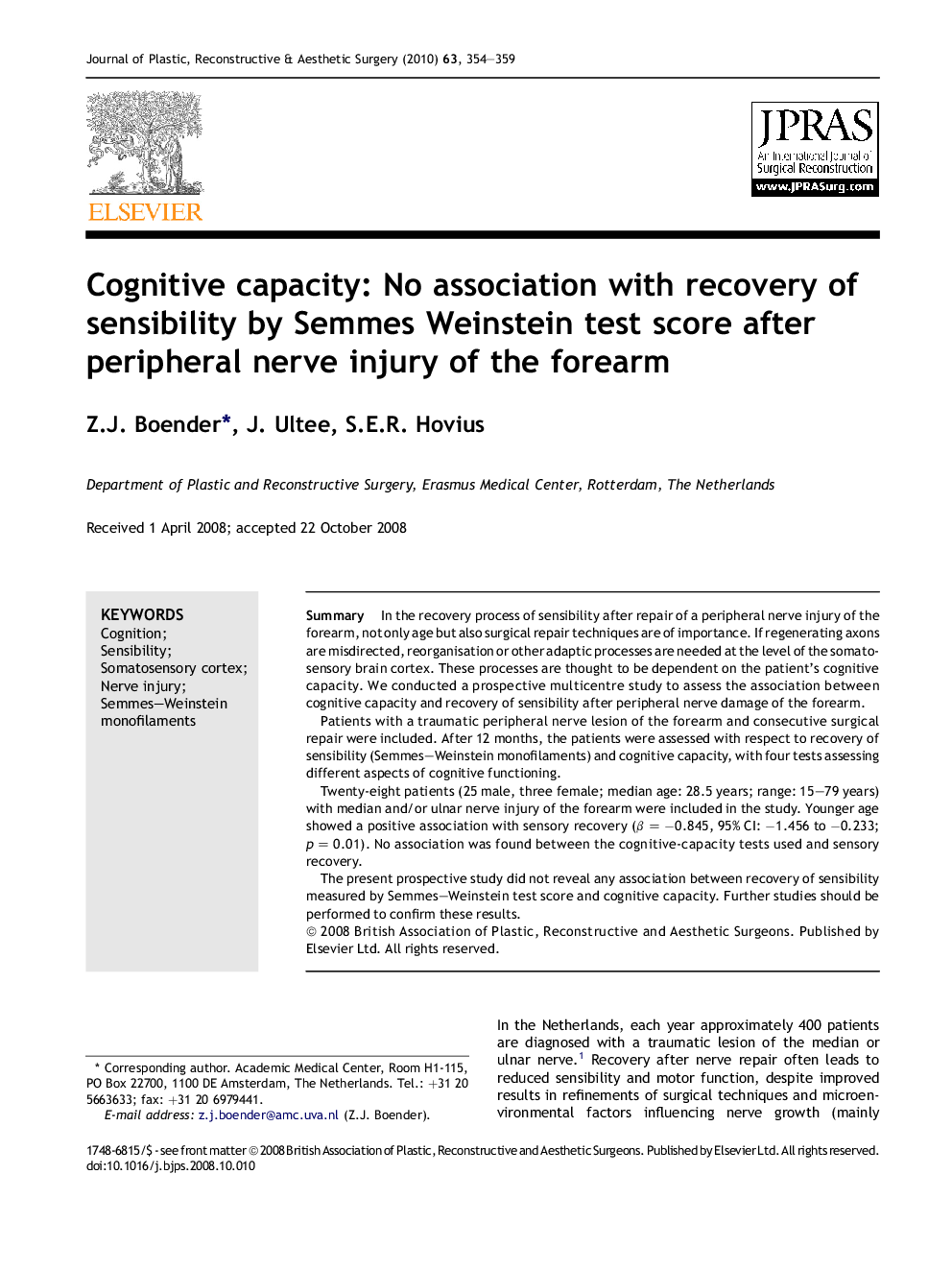| Article ID | Journal | Published Year | Pages | File Type |
|---|---|---|---|---|
| 4120183 | Journal of Plastic, Reconstructive & Aesthetic Surgery | 2010 | 6 Pages |
SummaryIn the recovery process of sensibility after repair of a peripheral nerve injury of the forearm, not only age but also surgical repair techniques are of importance. If regenerating axons are misdirected, reorganisation or other adaptic processes are needed at the level of the somatosensory brain cortex. These processes are thought to be dependent on the patient's cognitive capacity. We conducted a prospective multicentre study to assess the association between cognitive capacity and recovery of sensibility after peripheral nerve damage of the forearm.Patients with a traumatic peripheral nerve lesion of the forearm and consecutive surgical repair were included. After 12 months, the patients were assessed with respect to recovery of sensibility (Semmes–Weinstein monofilaments) and cognitive capacity, with four tests assessing different aspects of cognitive functioning.Twenty-eight patients (25 male, three female; median age: 28.5 years; range: 15–79 years) with median and/or ulnar nerve injury of the forearm were included in the study. Younger age showed a positive association with sensory recovery (β = −0.845, 95% CI: −1.456 to −0.233; p = 0.01). No association was found between the cognitive-capacity tests used and sensory recovery.The present prospective study did not reveal any association between recovery of sensibility measured by Semmes–Weinstein test score and cognitive capacity. Further studies should be performed to confirm these results.
